The Gose is somewhat of a historical beer style. Did you know that it has been brewed since the 10th century? Yes, the Gose beer style drew its name from the river Gose, which flows in East Germany in one of the country’s oldest mining towns, Goslar.
Fun fact: apart from silver, Goslar had large deposits of salt, which leeched into the river Gose, making it salty. 10th-century brewers would use this salty water to brew the Gose beer style. The salty water gave the beer the salty character we love and enjoy today.
How do you brew a Gose? I never thought you’d ask. Unknown Brewing has everything there is to know about brewing a Gose. And to help explain this process, we will provide a recipe for you.
Recipe Selection
For today’s demonstration, we’re going with Martin Keen’s Passionfruit Gose recipe, as posted on the YouTube channel, The Homebrew Challenge. We like this recipe because it is clear and easy to follow. It also helps that the Gose in this recipe is passionfruit flavored, which is one of my favorite fruits.
Bias aside, Martin Keen is creative with his ingredients. Instead of opting for the traditional packet of lactobacillus (Wyeast Labs 5335), Martin goes for GoodBelly Probiotic Shot. Besides supplying the brew with bacteria, the shots impart a berry flavor to the Gose.
What You’ll Need: Ingredients and Equipment
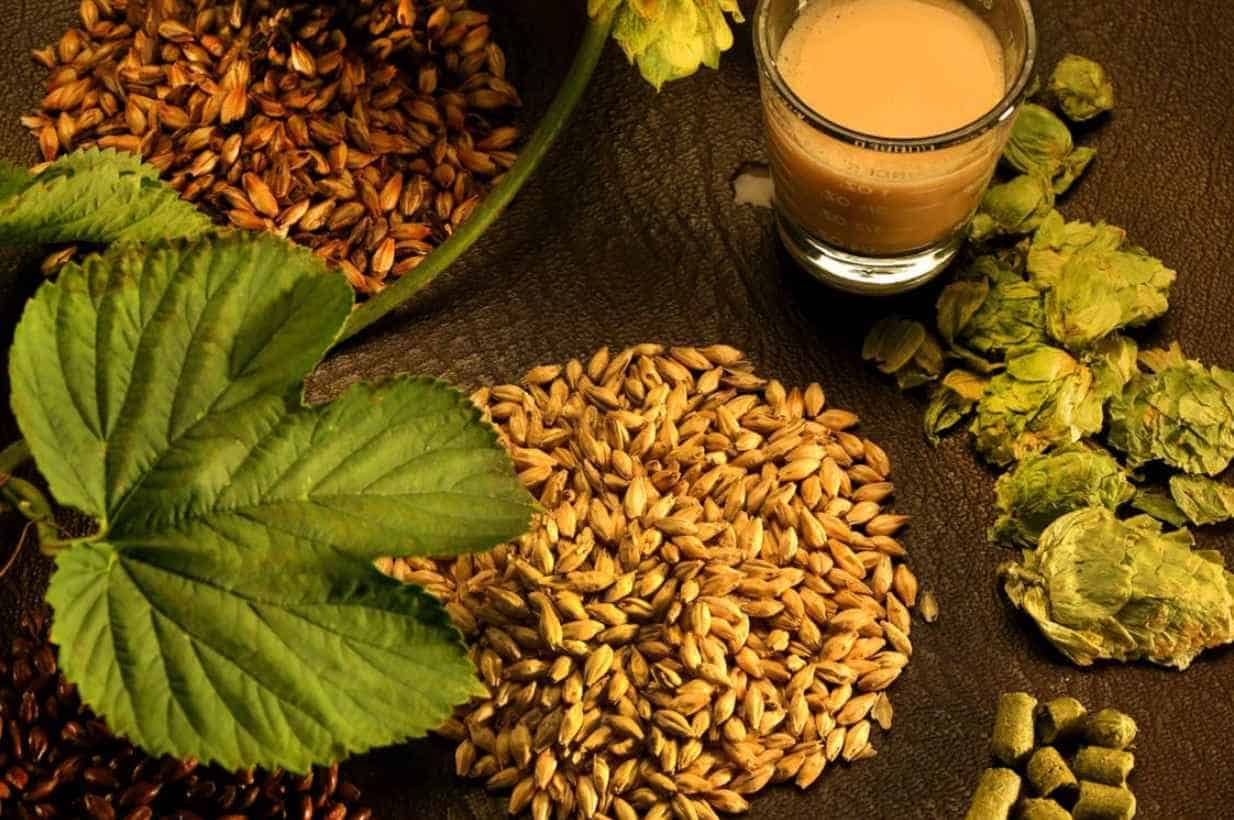
Now that you know why we love Martin Keen’s recipe so much, we can talk about supplies. Below are some ingredients and equipment you’ll need to brew a Gose.
Ingredients-wise, you’ll need the following:
- 5 lbs Pale Wheat Malt (40% of the grain bill)
- 4 lbs 2-Row German Pilsner Malt (30% of the grain bill)
- 3 lbs Passion Fruit Puree (30% of the grain bill)
- 0.5 oz Hallertauer Hersbrucker (4.0% alpha acids)
- 00.5 oz Coriander Seed
- 0.5 oz Sea Salt
- GoodBelly Probiotic Shots
- German Ale Yeast (Wyeast Labs #1007)
As for your brewing gear, gather the following hardware:
- 1 Brewing System (Clawhammer, Anvil, or equivalent)
- 1 Glycol Chiller
- Kegs
- 1 pH Meter
- 1 Hydrometer
- 1 Fermentor
- Whisk or Wooden Spoon
- 1 Grain Mill (optional)
- Some Sanitizer
*Note: You don’t actually need a grain mill. Sure, you need milled grains, but you don’t necessarily need to own a grain miller to get this result. You can have your grains milled at your local homebrew store. Just kindly ask the attendant to mill your order. Be sure to throw in a smile and exchange some pleasantries, and they’ll be happy to do it.
How to Brew a Gose: Step-by-Step Process
Back to our gose, where were we? Yes, we have our ingredients and brewing equipment; let’s get to brewing.
Step 1: Clean and Sterilize All Your Brewing Equipment
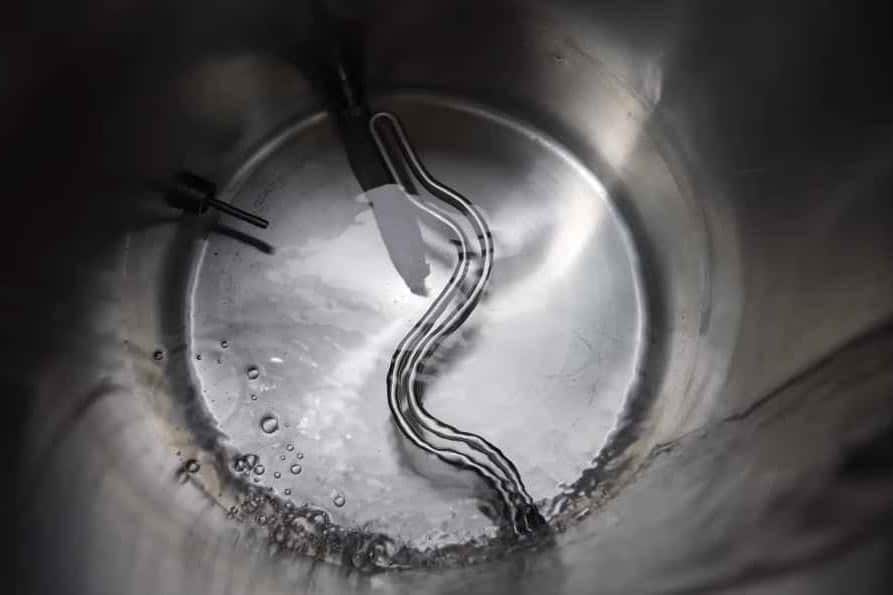
Wort is a very nutritious substance, attracting mold, bacteria, and other microorganisms that are after the sweet sugar in the wort.
But we don’t want that; we’re saving all the sugar for our German Ale Yeast, our star player. If we let bacteria and mold get into our brewing process, we’ll be opening the door to spoilage, off-flavors, and short shelf lives.
Stopping contaminants begins at the start of the brewing process; by cleaning and sanitizing your brewing equipment.
So pull out your sanitizer and start disassembling your bigger brewing equipment. Soak each component in sanitizer for at least 10 minutes. Alternatively, you can boil the components in clean water for the same amount of time. So get busy, and let’s meet up in the next step.
Step 2: Adjust Your Water Chemistry

Even though he does it off-camera, Martin explains that he added some gypsum, calcium chloride, and Epsom salt. He doesn’t reveal the quantities because he believes that depends on you and the chemical composition of your water.
But he does insist on one thing; water pH. The goal is to get to 5.2 water pH. And for that, we’ll use a few drops of lactic acid.
But you cannot adjust something if you don’t know its initial level. So draw out a sample of your water and take a pH reading. If you’re using tap water, you’ll get a neutral or near-neutral reading; that’s 6-7. Add a lactic acid drop-by-drop until you get to 5.2 pH.
Step 3: Mashing
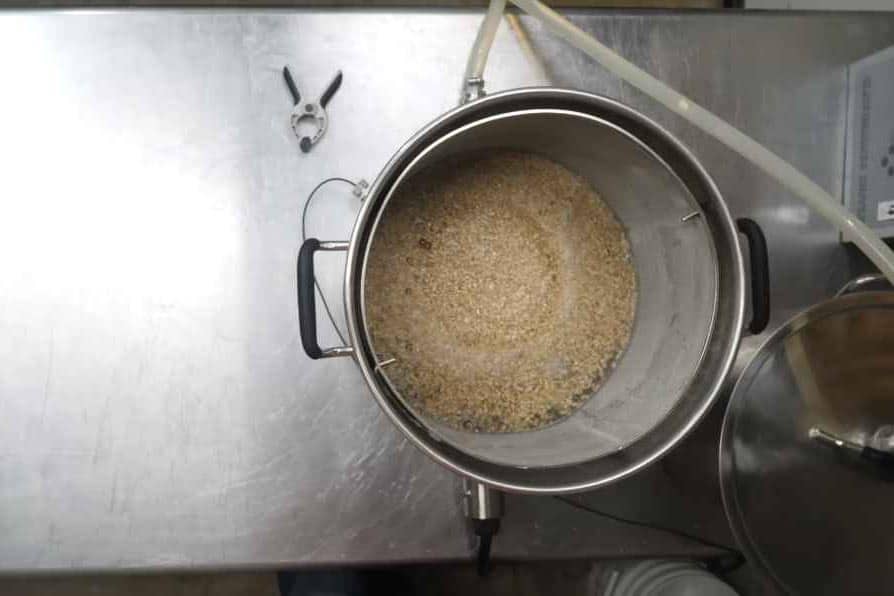
The mashing process for brewing beer is quite similar to that of other beer styles. Bring your water temperature up to 152°F, then add your crushed grains. We’ll let the grist cook for 60 minutes.
Cooking malt at this temperature for that amount of time activates the natural enzymes in the grains. These enzymes process the complex sugar (starch) in the grains into simple fermentable sugars (carbohydrates). This is the action that we in the industry call saccharification.
Note: while the mash is simmering, be sure to stir the wort from time to time during the 60-minute mash. Stirring the grist eliminates any hot spots that may develop in your brew kettle. Use a wooden spoon or (as Martin does) a kitchen whisk.
Once the 60 minutes elapse, withdraw your grain bag to separate the wort from the spent grain.
Step 4: Pasteurize Your Wort
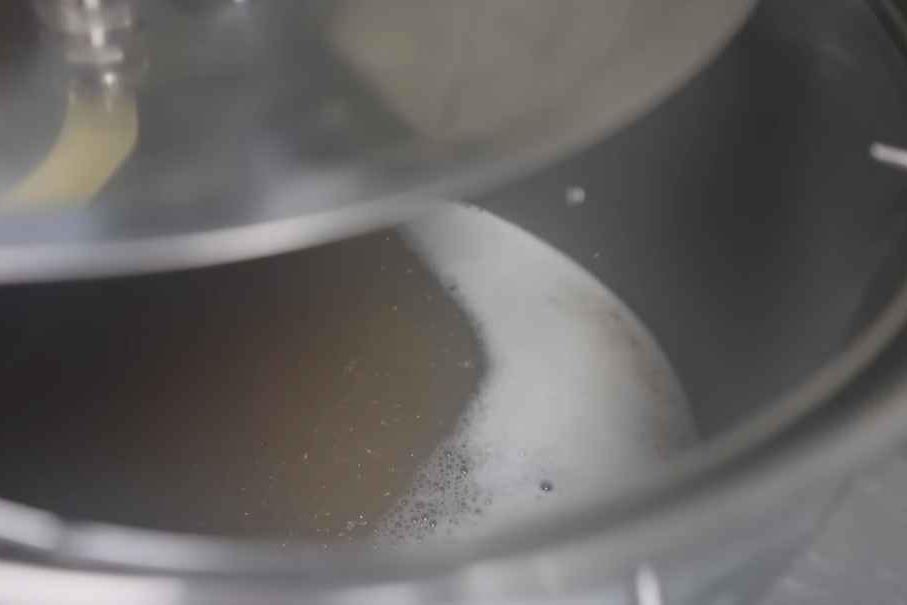
Smell that? The sweet scent of malt; kinda makes you crave a taste. But restrain yourself, for we are not done.
The next step is to pasteurize the wort, our second measure against contaminants. To pasteurize the sweet nectar, bring the wort’s temperature to 180°F and maintain that temperature for about 10 minutes. After the 10-minute window, allow the wort to cool down to 95°F.
And here’s a pro tip for you; use a wort chiller to hasten the cooling.
Step 5: Souring the Wort
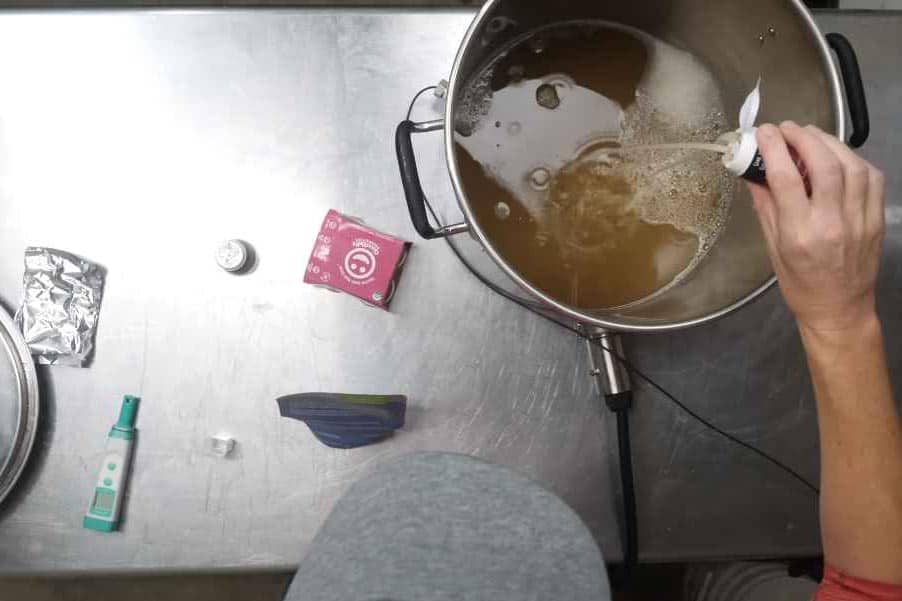
I know I said we don’t want any bacteria in our wort. But well, make an exception because the German Gose is a sour beer style. We need a strain of bacteria to bring out the tartness that is characteristic of the Gose beer style.
To source our lactobacillus bacteria, we’ll be using GoodBelly Probiotic Shots. But before we rip open the seals and pour in the GoodBelly Probiotics, you should take note of your pH. So draw out a sample and take a pH reading.
You’ll probably find a pH reading of around 5. The bacteria will help drop that reading to about 3.5 pH.
Cover your brewing kettle and set your temperature controller to 95°F. We’ll let the concoction sit until the bacteria lowers the pH to 3.5. It may take a day or two. Once the pH hits 3.5, you can proceed to the next step.
Step 6: Boiling
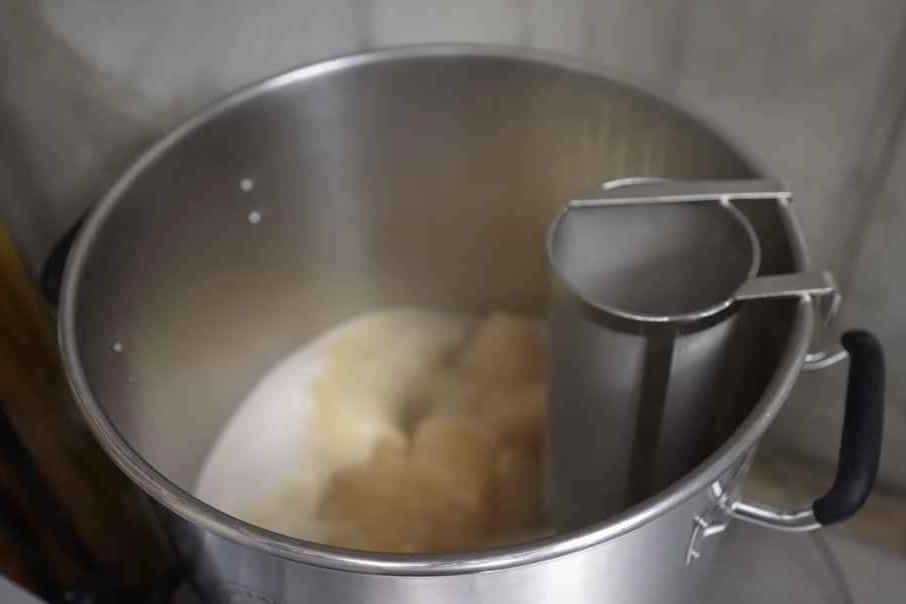
A Gose is a lightly-hopped beer. For this reason, we’ll only boil 0.5 oz of Hallertauer Hersbrucker for only 30 minutes. No bittering boil here. Martin Keen selects this hop variety for its low alpha acid content. This, again, speaks to the point that the Gose is a lightly-hopped beer style.
Install your hop basket as you bring the wort to boil. As soon as the wort starts boiling, add your 0.5 oz of Hellertauer Hersbrucker. This boil should last for 30 minutes. But we have another addition at the 15-minute mark. So set your timer to 15 minutes.
Meanwhile, measure out 0.5 oz of coriander seeds and an equal amount of sea salt. Pour the sea salt and the coriander seeds into a mortar and get to crushing.
As soon as the 15-minute timer goes off, add your crushed sea salt and coriander seeds. This addition can go directly into the wort; no need for the hop basket. Set your timer for another 15 minutes.
Once the time elapses, cut the heat, withdraw your hop basket, and let the wort cool to 68°F. Again, you can expedite the cooling process by running your wort through a heat exchanger as you transfer it to a fermentor.
Step 7: Fermentation
With your wort at 68°F, rip open a packet of German Ale Yeast (Wyeast Labs #1007) and pour it into the wort. We will hold the wort at 68°F for a few days until the Krausen subsides. So, keep an eye on your fermentor.
Step 8: Flavoring and Adjuncts
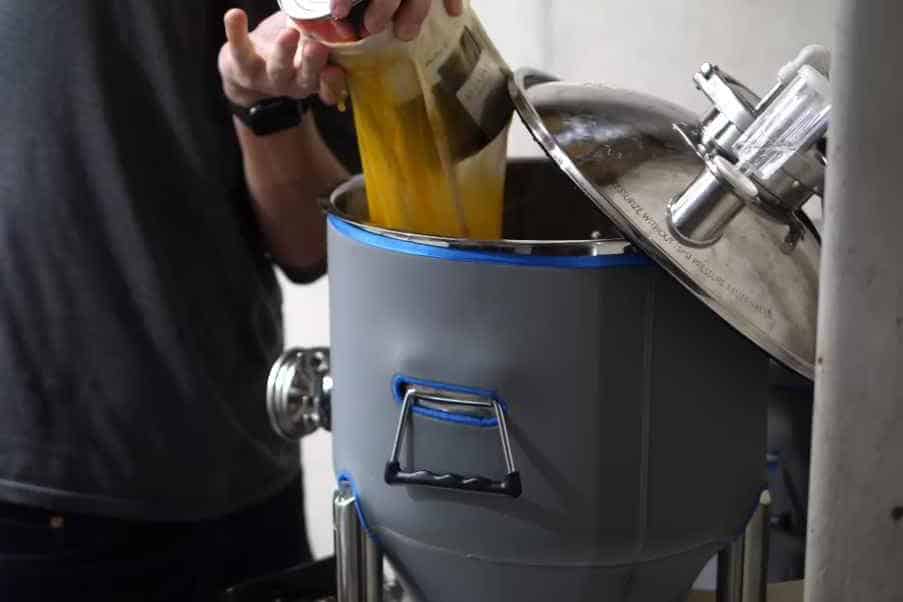
Once fermentation concludes, we can move on to the flavoring step. For his adjunct, Martin goes for passionfruit puree. It has an adequate amount of sugar to jumpstart the fermentation process.
We’ll use a brew bag to hold back the pulp of the passion fruit puree. Hygiene is critical, so sanitize your brew bag before use.
In the meantime, cut open your 3lb can of passionfruit puree. Dress the can from its mouth with your brew bag. Ensure the bottom of the bag covers the mouth of the can while the mouth of the bag hugs the bottom of the can.
Gently invert the can over your fermentor. Watch out for spillage. Once the can is empty, withdraw it from the brew bag and tie it securely. Drop the bag into your fermentor.
Seal the fermentor and let secondary fermentation run for a few more days. You can use a keg instead.
Final Thoughts
And that, folks, is how you brew a Passionfruit Gose. Are you craving for a cold glass of something different? Something salty and sour? Don’t just run to your local craft brewery and order a pint of German sour beer. Turn on your creativity and brew yourself a hazy Passionfruit Gose.


As a homebrewer, Michael would get frustrated about the lack of brewing information on the internet. After hundreds of gallons of spoilt batches, Micheal had enough. And he founded Unknown Brewing as a resource for homebrewers.
